Like most of you reading this, I learned to ride a pedal bike using training wheels (a.k.a stabilisers). I remember getting my first bike for my 5th birthday – very late compared to these days!) – and the joy of taking it out on the path while I pedalled along.
I also remember the day when my parents took the training wheels off and I wobbled down the road with my dad running behind me, frantically trying to keep me upright.
Like trying to rub my tummy and pat my head at the same time, I hadn’t quite developed the coordination needed to cycle independently. Suddenly taking my training wheels off was pretty scary but I eventually got there and have loved cycling ever since!
Thankfully, there is now a simpler way that allows kids to get started as young as 2 years old – balance bikes. But exactly what is a Balance Bike and what are the main differences between balance bikes and kids bikes with training wheels?
Table of Contents
ToggleThe Fundamentals
Balance Bike
A balance bike has no pedals. To move forwards, the child pushes off the ground with their feet. They usually start by just walking while sitting on the saddle, followed by running and finally, gliding with their feet off the ground. Once they can cruise along with their feet up, they have learned to balance and are ready to begin pedalling.
With a balance bike, the child learns the core cycling skills of balancing and steering first, then can progress to pedalling in their own time. Learning to pedal is much easier than learning to balance, and since the child will be able to coast along comfortably, there is no urgency.
Learn to balance, steer and brake on a balance bike. Solid fundamental skills learnt before moving to pedals.
Pedal Bike with Training Wheels
On a regular kids bike the child learns to pedal first while being supported by the training wheels. Kids riding a pedal bike with training wheels won’t develop their balance as the training wheels keep the bike upright, like a crutch.
Once the training wheels are removed, kids have to learn how to balance (the more complex skill) while pedalling at the same time.
Pedalling before learning the basic skill of balancing develops bad habits that will need to be undone.
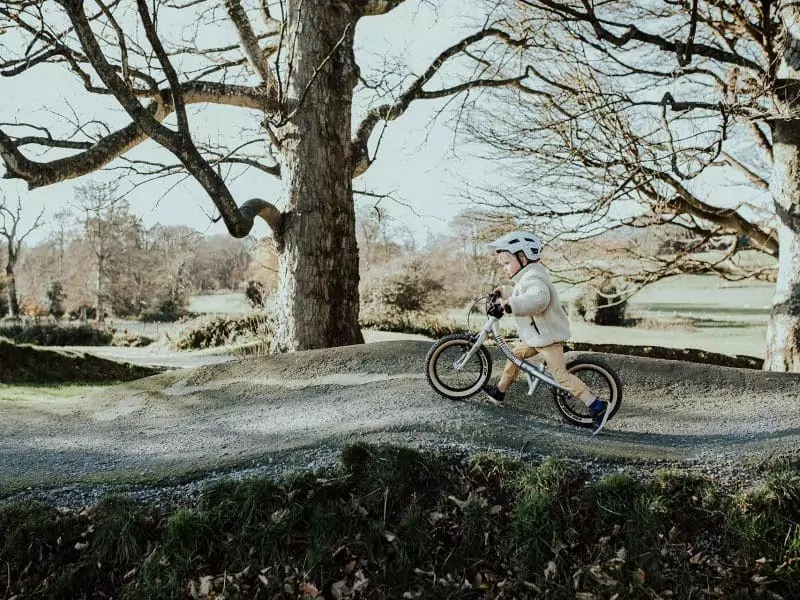
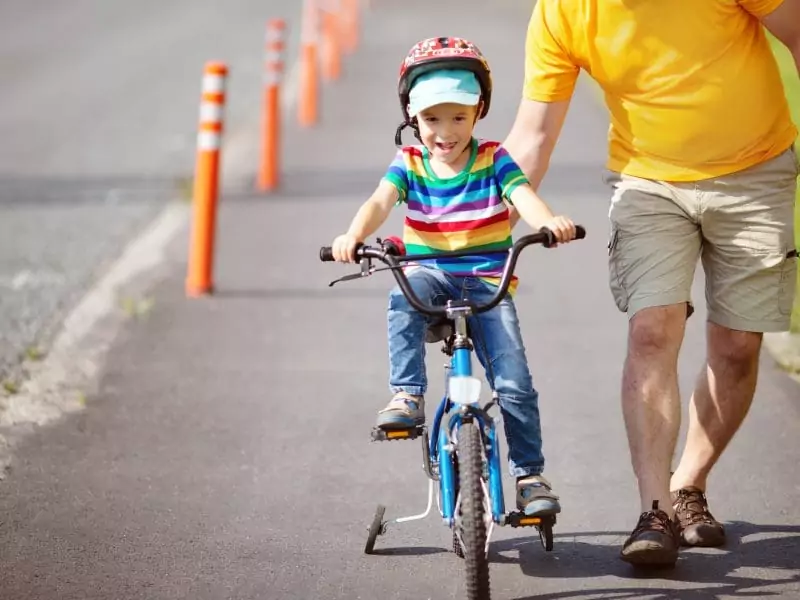
How to Get started
Balance Bike
Check out our top tips for getting your child started on their balance bike. After adjusting the saddle height so their feet are flat on the floor while sitting in the saddle. Some kids will just ride off once given the bike, but others may need a little nudge to get them going.
Having their feet on the ground will give the confidence to just start going. They are using their own legs to steady themselves instead of cumbersome stabilisers.
Pedal Bike with Training Wheels
Set the saddle so your child can reach the ground with his/her tiptoes, so they can get on and off the bike easily. Depending on the bike’s gearing (see above), your child may need a helping push to get started. Try to make sure that they pedal full circles, rather than ratcheting back and forth in part rotations.
Children who have not learnt how to balance yet tend to lean on the training wheels and can find it hard to start the bike moving.
Pedalling
Balance Bike
I’ve always been amazed at how quickly kids have started pedalling, having learnt to balance on a balance bike first (the clue is in the name!). Having learned to balance and steer, kids don’t have the same fear of falling over, and usually 10 minutes or less is all it takes to get used to the pedalling motion.
Normally once the child is ready to start pedalling , a new pedal bike will be needed, which is the main drawback of normal balance bikes. Unless it’s a convertible balance bike that can be transformed into a pedal bike!
Starting to pedal after learning to balance is a much quicker, intuitive process with little to no help needed from mum or dad.
Pedal Bike with Training Wheels
It seems the majority of brands that still use training wheels also have bad/hard gearing on their pedal bikes. If the gearing is too hard, it will be more difficult to turn the pedals and start the bike moving forwards, imagine trying to start your car in 4th gear!
When you add the increased weight typical with most kids pedal bikes into the mix, it’s no wonder that kids often need more help to get moving than on a balance bike.
Typical pedal bikes can be quite heavy and cumbersome compared to the simplicity of a balance bike.
Get 10% off your LittleBig bike
Cornering
Balance Bike
A balance bike’s low weight, low centre of gravity, simplicity and lack of stabilisers means it will corner like it’s on rails and be lots of fun for the little rider.
Low centre of gravity makes cornering easier, safer and much more intuitive.
Pedal Bike with Training Wheels
A bike steers by leaning, and since training wheels keep the bike upright, they make it more difficult to turn. Even worse, because a bike with training wheels can’t lean into a corner the way it should, it will lean away from the corner onto their outside wheel so the rider will learn to lean the wrong way.
Training wheels restrict natural cornering technique.
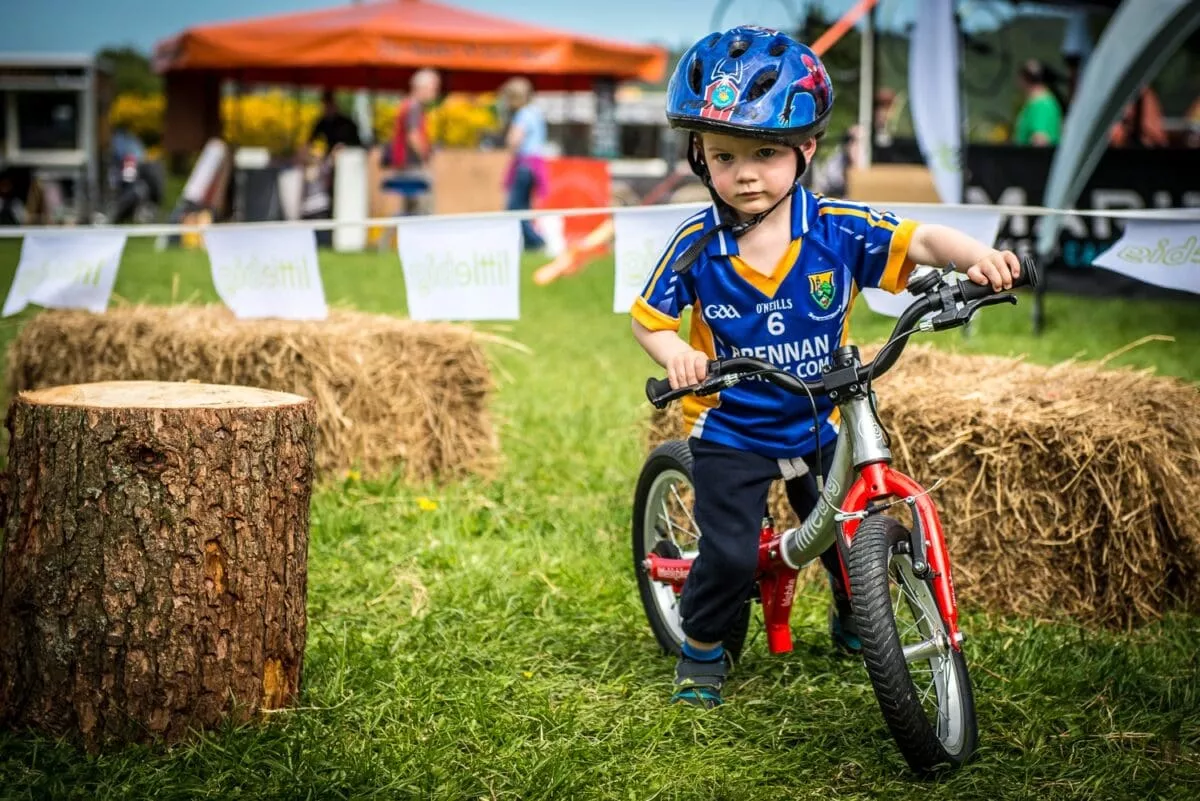
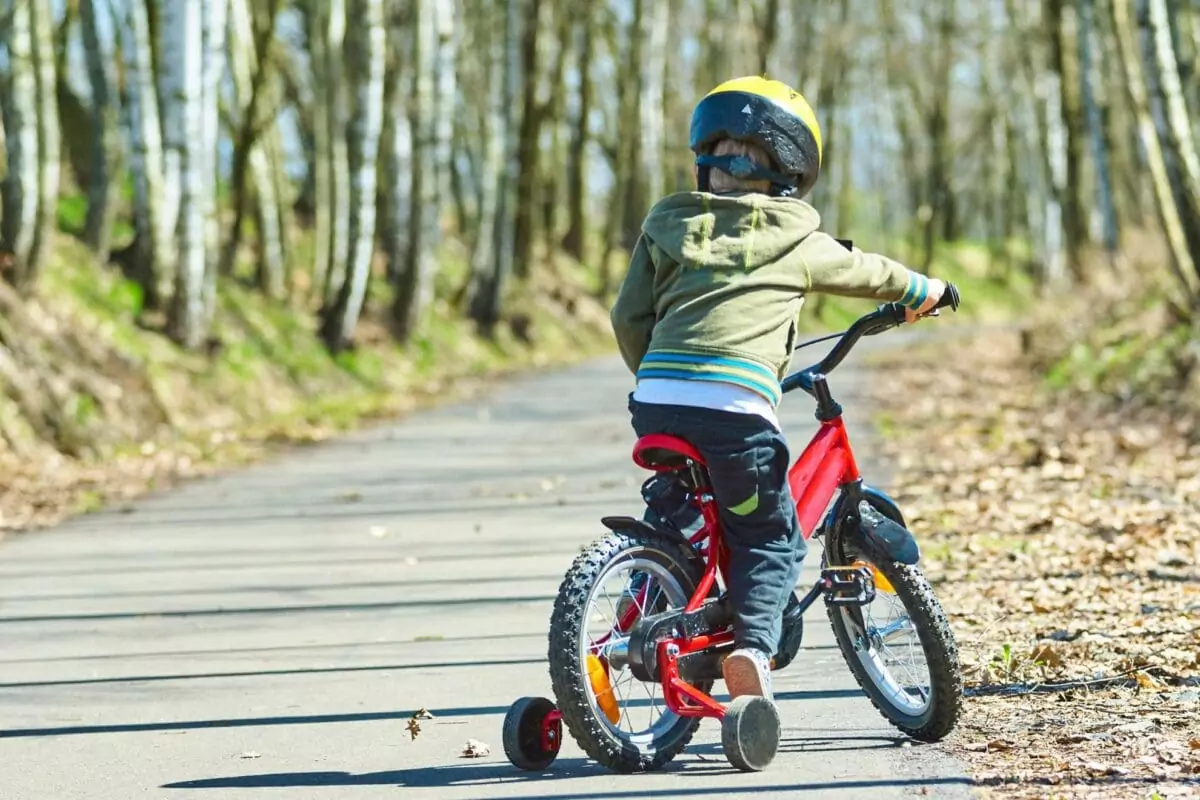
Braking
Balance Bike
Some balance bikes are brake-less (at the expense of the kid’s shoes!), while others will have only one brake. The better models, such as the LittleBig balance bike has front and rear brakes. In order to be able to stop quickly and safely, at least one brake is preferable.
LittleBig teaches use of both brakes from the beginning.
Pedal Bike with Training Wheels
Kids pedal bikes should have both front and rear brakes. For bikes sold in the USA, the rear brake needs to be a coaster (back pedal) brake while elsewhere V-brakes or side-pull brakes are normal.
A lot of kids’ pedal bikes will have poor quality plastic brakes.
Top Tip!
Look for a bike with short-reach, child specific brake levers, these will be shaped to work better with small hands.
Choosing the Correct Size
Balance Bike
The saddle on a balance bike usually starts quite low so the child can have their feet flat on the ground and be able to walk and run easily. Bear in mind that some small balance bikes have a limited height range so your child may outgrow it quickly.
Kid’s feet are always near the ground, making it safer and giving them more confidence.
Pedal Bike with Training Wheels
The saddle has to start higher as there needs to be enough clearance so the pedals don’t hit the ground. The saddle should be high enough so the child’s leg is almost straight at the bottom of the pedal stroke.
The higher saddle height will make it more difficult for kids to reach the ground with their feet.
Weight (The Lighter the Better)
Balance Bike
Balance bikes are typically made of aluminium but can also be made from plastic, wood or steel. Aluminium provides the best balance of weight, strength and durability. A balance bike’s simplicity makes it much lighter than the same size pedal bike. As well as making them easier to ride, it’s also handy for parents to carry if their little one has done enough biking.
Lighter all around, making it easier for the child to ride and the parent to lift or carry.
Pedal Bike with Training Wheels
The majority of kids’ pedal bikes are made of heavy steel though some brands use aluminium. If a bike is heavy, it makes it difficult to manoeuvre and pedal along. The training wheels add extra unnecessary weight to an already heavy frame.
Heavy frames are harder for the child to get moving and manoeuvre. They are also more difficult for the parent to lift and carry.
Wheels and Tyres
Balance Bike
The best balance bikes come with spoked wheels and air filled, rubber tyres. Some smaller balance bikes come with 10″ plastic wheels and EVA foam tyres. EVA foam tyres are lightweight and puncture proof, but they provide very little grip and once worn out the entire wheel needs to be replaced. Most balance bikes come with 12 inch wheels while there are numerous 14 inch balance bikes such as the LittleBig. It’s important to look at the saddle height as this is what indicates whether the bike will fit your child.
Air tyres will provide plenty of cushioning for the rider and more grip too. If the wheel has cartridge bearings it will spin freely and smoothly. The wheels or tyres can easily be serviced or replaced at any decent bike shop.
Good balance bikes will have real wheels and tyres, giving more comfort and safer grip.
Pedal Bike with Training Wheels
Pedal bikes will almost always come with rubber tyres to provide grip to the rear wheel for pedalling. However, the little training wheels wheels are hard plastic which can make a rattling noise as they drag and skip on the ground.
We often see that the training wheel brackets bend after a while which can make the bike lean on one side more than the other.
Training wheels are usually hard plastic and tend to rattle and be quite noisy.
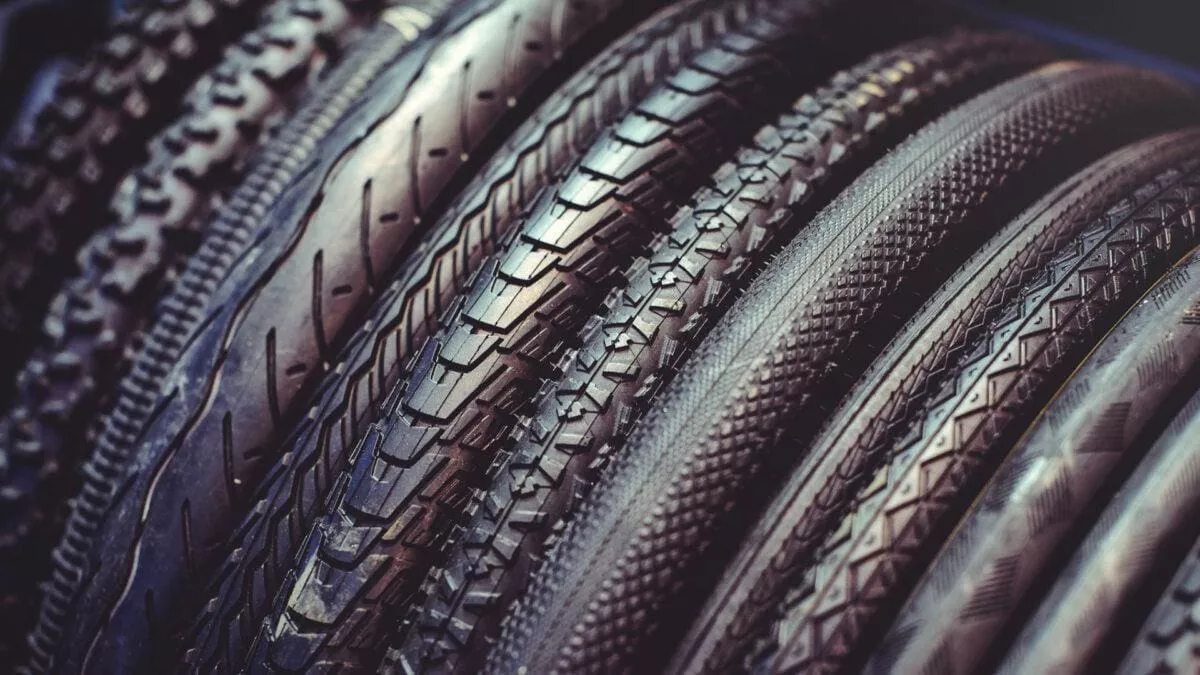

Riding Terrain
Balance Bike
Balance bikes can be used on most surfaces and can be used on hills and sloping surfaces no problem. If it has brakes (hyperlink) it will be much easier to control on an incline than if it’s brake-less. Since balance bikes can pretty much go anywhere, they safely help develop your child’s sense of adventure!
Will work well on almost any terrain, from footpaths to forest trails.
Pedal Bike with Training Wheels
The small training wheels are difficult to use on sloped ground or rough surfaces and will dig into soft ground, which may lead to the bike toppling unexpectedly.
Training wheels will restrict the variety of terrain your child can ride on.
What Are The Benefits of Balance Bikes vs Training Wheels?
The benefits of balance bikes over training wheels are numerous:
- Natural Balance Development: Balance bikes teach children to balance on two wheels, promoting natural bike handling skills.
- No Training Wheels Required: Balance bike riders do not rely on training wheels to stay upright, allowing kids to learn proper balance and steering techniques independently.
- Confidence Building: Balance bikes help children develop confidence and coordination as they learn to control their speed and balance without the aid of training wheels.
- Smooth Transition to Pedal Bikes: Children who start on balance bikes often transition to pedal bikes seamlessly, as they have already mastered the most crucial and nuanced aspect of cycling—balance.
- Enhanced Motor Skills: Riding a balance bike improves motor skills, coordination, and spatial awareness, providing a solid foundation for future physical activities.
- Safety: Balance bikes are generally safer than bikes with training wheels, as they eliminate the risk of tipping over when turning or encountering uneven or soft terrain.
- Lightweight and Maneuverable: Balance bikes are typically lightweight and easy for children to manoeuvre, allowing them to explore a variety of terrains with ease.
- Encourages Outdoor Play: Riding a balance bike encourages children to spend time outdoors, promoting physical activity and a love for exploring their surroundings.
- Early Mobility: Balance bikes allow children as young as 18 months old to start exploring the joy of riding. They offer a safe and fun way for toddlers to develop gross motor skills and experience the freedom of mobility.
- Cost-Effective: Balance bikes are often more cost-effective than bikes with training wheels because they are simpler, and if using the LittleBig convertible balance bike, it can be adapted into a pedal bike, giving long-term value.
In summary, balance bikes offer a holistic approach to learning to ride a bike, focusing on fundamental skills that lay the groundwork for a lifetime of cycling enjoyment.
Ease of Maintenance
Balance Bike
Balance bikes are the essence of a bicycle, all you need and nothing more. This makes them simple to set up and maintain.
Simple and easy to set up and maintain, just check tyre pressure and brakes.
Pedal Bike with Training Wheels
Pedal bikes have more moving parts to maintain such as the pedals, chain, bottom bracket. The training wheels wheels need to be checked as they often bend which leads to an unbalanced ride.
More moving parts mean more maintenance.
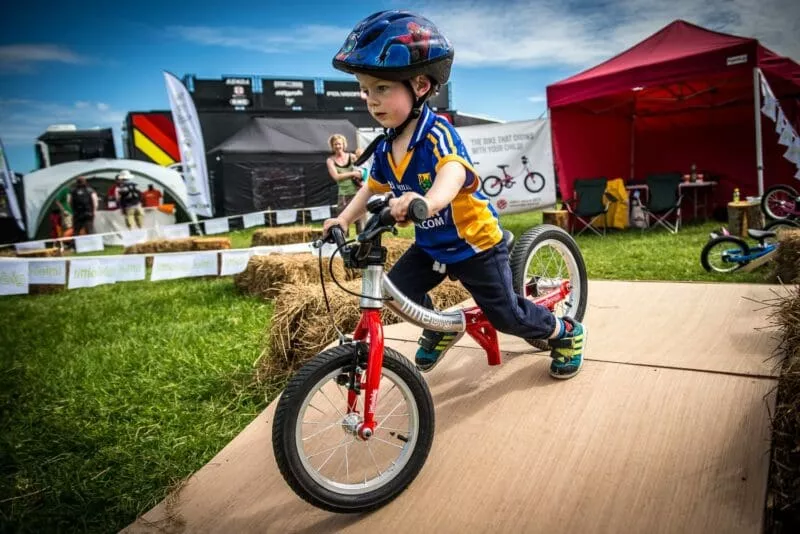
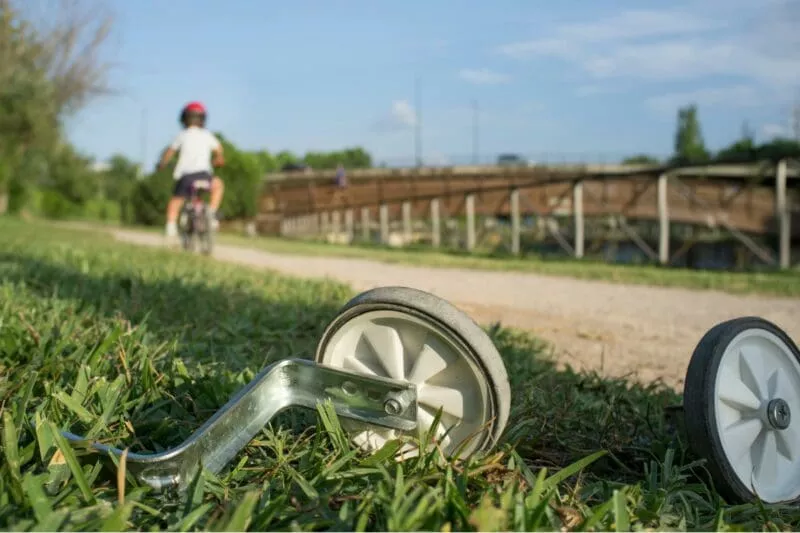
Is There Any Evidence On The Benefits Of Balance Bikes?
Until recently there was only anecdotal evidence on the benefits of the balance bike compared to training wheels, though I had seen how great they are with my own eyes (which is why I came up with the LittleBig bike!).
A recent Dutch Study surveyed the cycling history of a large group of kids aged 4-6 years old, focusing on whether they started cycling on balance bikes or pedal bikes with training wheels. The results found that one of the primary advantages of balance bikes is likely caused by the balance bicycle more actively challenging postural control.
The same study found that not only did the balance bike riders start pedalling earlier, but they had a shorter learning period to get there.
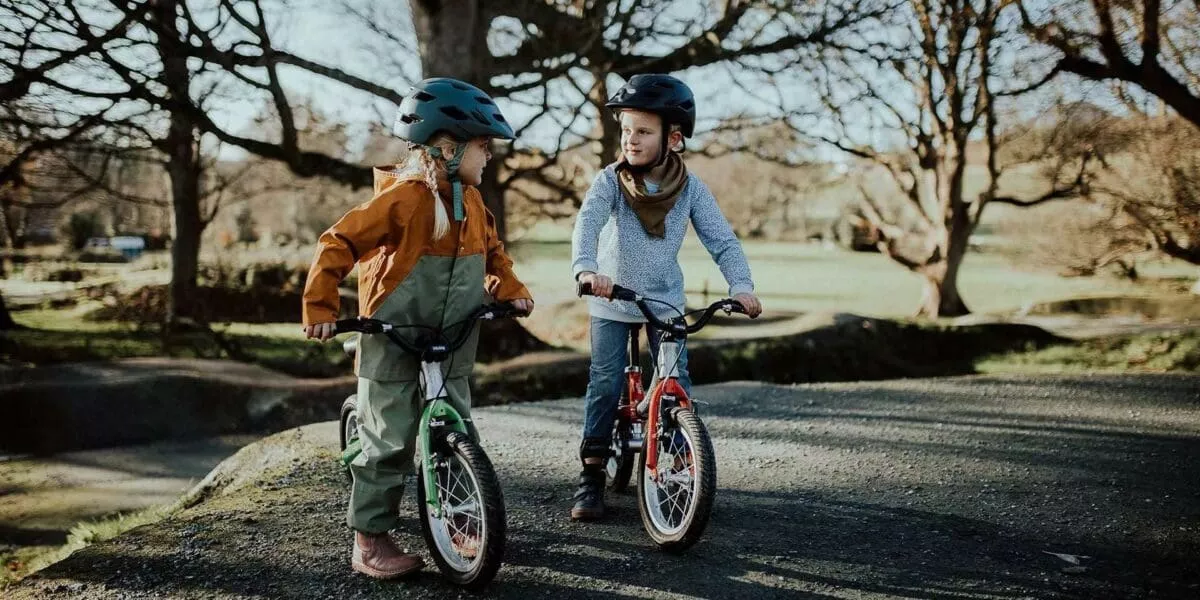
Which Is Safer, Balance Bike Or Training Wheels?
Balance bikes are generally safer as there is less risk of tipping over unexpectedly in soft or sloping terrain such as a skatepark or pump track.
With both balance bikes and bikes with training wheels, quality is important and the more expensive bikes will have been carefully thought out. Key safety considerations are whether the pedal bike or balance bike has brakes, a lack of protruding/ sharp edges and how much work will be involved to keep the bike running safely. It's important to choose a clear area to ride to avoid clashing with pedestrians or obstacles.
As well as the above, we always recommend your child wears a helmet, no matter what type of bike they are riding!
What about geometry?
Bike geometry relates to the size and angles of the frame and fork. Saddle height and handlebar reach on both balance bikes and kids bikes with training wheels can vary dramatically.
On both bikes, it’s best to have a medium to long reach so the body is leaning forwards in an open arched position with the arms slightly stretched. If the bars are too close to the saddle it makes the cockpit cramped and will make the bike feel twitchy and harder to control. Wide bars are also preferable to keep the steering stable, a must for when your child is reaching warp speed!
Our LittleBig bike adapts with your growing child, so the geometry changes as it converts from a little balance bike to a big pedal bike as shown on our sizing guide.
What Age Can Kids Ride Independently With Pedals?
The average age for independent pedalling is between 4 and 5 years old but some kids as young as 3 can learn to ride with pedals. Studies show that kids who started learning on balance bikes began pedalling independently earlier than kids who started on pedal bikes with training wheels. One of the key factors is that kids who used balance bikes had learnt how to balance, steer and use their brakes before progressing to pedalling.
Can You Make A Balance Bike By Taking The Pedals Off A Pedal Bike?
You can in theory convert a normal pedal bike to a balance bike. However, pedal bikes need enough clearance so the pedals don't hit the ground, and therefore are taller than balance bikes. The higher saddle will likely be unsuitable for younger kids but may work for older kids as a short term solution.
To convert a pedal bike into a balance bike will require mechanical knowledge and special tools.
Conclusion
We’re always delighted to see kids outdoors on bikes of any kind, whether on a child seat, balance bike, or even a bike with training wheels. But it’s even better to see kids zooming along independently with their parent often lagging behind.
And it’s not just us, even classic brands like Raleigh are moving away from bikes with training wheels to balance bikes. So if you’re looking for a new bike for your toddler, forget about training wheels, buy a balance bike instead and give them the best start on two wheels!
Round the world cyclist, mountain bike racer, engineer and all round bike geek, Simon Evans clearly loves all things BIKE.
Simon worked as a Structural Engineer in Cambridge for a number of years before setting off on an 18 month, 30,000km cycle around the world, testing his bike, body and mind to the limit and giving a wealth of wonderful experiences.
Coming home in 2010, he wanted to combine his engineering with his love of bikes to create a better and more sustainable bike for kids. In 2015 he launched LittleBig bikes which have now been sold to 77 countries around the world giving thousands of kids the best start on two wheels.
- Simon Evanshttps://www.littlebigbikes.com/author/littlebigbikes/July 28, 2023
- Simon Evanshttps://www.littlebigbikes.com/author/littlebigbikes/April 19, 2024
- Simon Evanshttps://www.littlebigbikes.com/author/littlebigbikes/February 15, 2024
- Simon Evanshttps://www.littlebigbikes.com/author/littlebigbikes/September 20, 2022


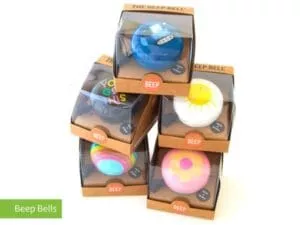
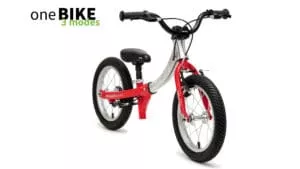
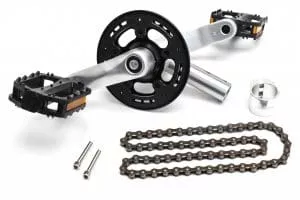
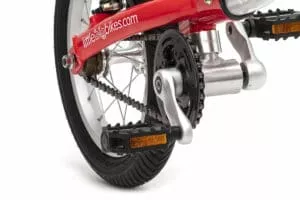

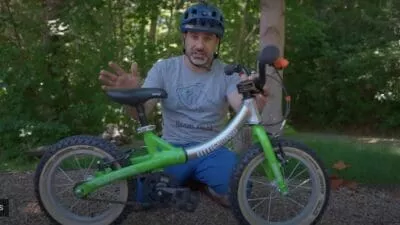
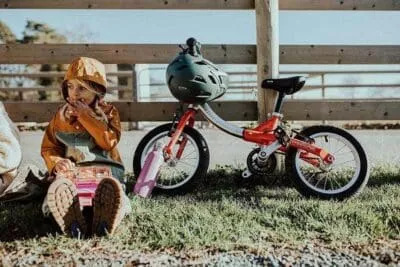

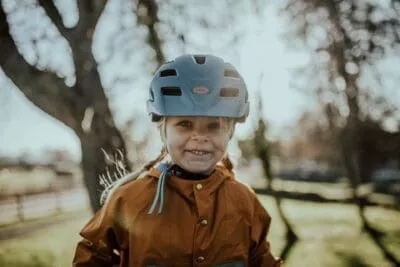
I’m a senior citizen and alway rode my bike everywhere. Recently I had a fall and now I have small problem with my balance. I’ve been thinking of getting a balance bike. Do you think it might help
Hi Patricia
A balance bike could work for you but unfortunately ours would be too small for you, it’s only designed for kids. I believe there are some bigger ones available such as the Strider Adult. Hope that helps!
Yes, Balance BIKES are more comfortable than BIKE WITH TRAINING WHEELS. especially in cornering point balance bikes are more helpful, These bikes can balance easily because of less weight.
My 4.5 year old has been on a balance bike only, since he was about 2. He really does shred on the balance bike and even goes off really small jumps. He is now so good at it he doesn’t even want to be on a pedal bike. It’s great to go on bike rides with him now! I do have a question though: after a mile or so, he starts to complain about a sore butt and tired legs. I tell him with a pedal bike he wouldn’t have to work as hard and could go faster and longer, but the pedal bike is “harder” for him and he doesn’t like it at all. I’m sure eventually he will want to make the change on his own, but he is so ready and just doesn’t know it. Do you have any tips on how to transition to pedals? Or should I just wait it out until it’s his choice?
Hi Helen, that’s great your son is shredding on his balance bike. It may be worth looking at the handlebar position, you can roll the bars backwards to shorten the reach. You can also raise the handlebars by up to 30mm, just follow the instructions below:
1 – Loosen the two black 6mm allen bolts on the side of the stem (as seen in this photo).
2 – Remove the silver 5mm allen bolt from the top of the stem then remove the top cap, the stem and the 15mm spacer.
3 – Fit the spacer over the fork tube then place the stem on top of the spacer.
4 – Fit the top cap then tighten the silver 5mm allen bolt until snug so there is no forward/backward play in the headset bearings (best to pull the front brake while doing this).
5 – Align the handlebars with the front wheel and tighten the two 6mm allen bolts securely.
6 – Check the handlebars are secure by holding the front wheel between your legs and ensure the handlebars cannot move independently of the wheel.
You can get an additional 15mm of handlebar height by flipping the stem during the process above. It wasn’t designed aesthetically to work upside down but it will function perfectly.
Finally, it’s worth trying different saddle heights and see which position works best for him. If the saddle is too low his legs will get tired more easily.
Hope that helps, Simon
Is there any research-based ‘evidence’ that has ever been published in a learned peer-reviewed journal that supports the assertions made about the effectiveness of using balance bikes to teach kids how to ride?
It intuitively feels right but so did the idea that the sun revolved around the earth!
Hi Michael
There have been limited studies but it’s not a topic that’s been covered in detail with hard evidence. Most of the feedback I’ve seen (and experienced personally) is that having used a balance bike, kids will progress to pedalling within 15mins (or even less) and at a younger age than when using stabilisers. Most of our customers fit pedals to their LittleBig bike when their child is 3-4 years old. I’m still shocked when I see older kids of 6 and 7 trundling along on traditional bikes with their stabilisers attached.
There is now some research based evidence from a Dutch study as outlined on our post Are Balance Bikes The Best Way To Learn To Cycle? . We’ve heard anecdotal evidence on the benefits of balance bikes, but it’s great to finally have a study that confirms what we’ve known for a while.